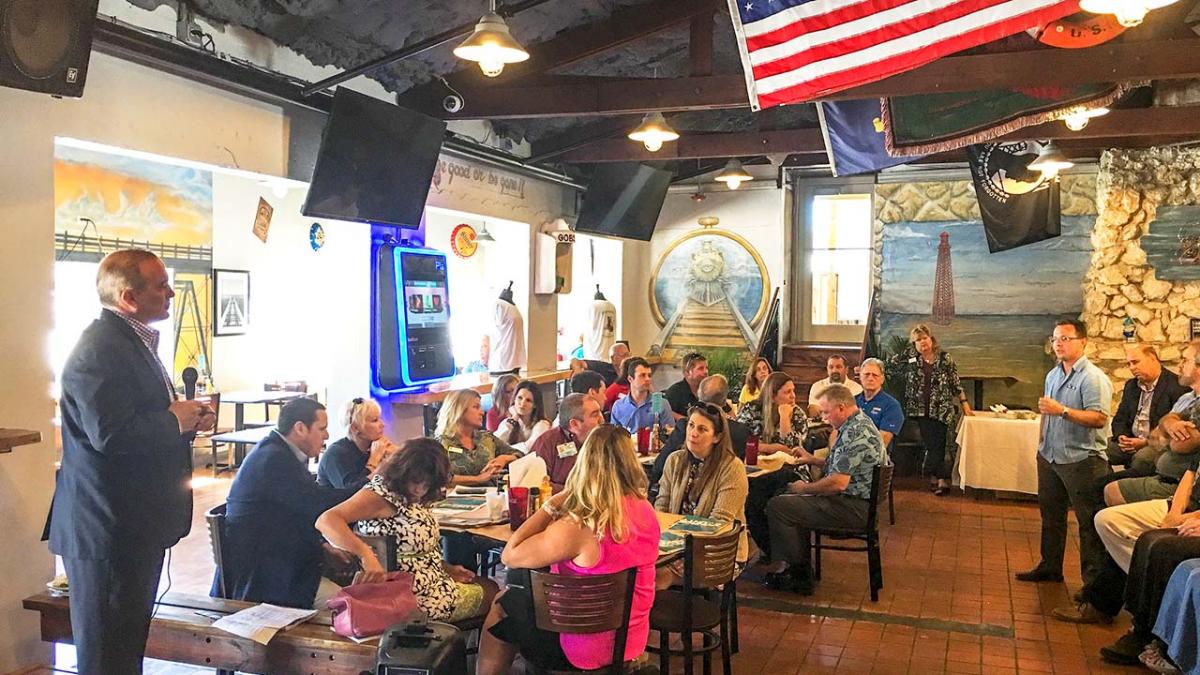Monroe County BOCC/Flickr (Public Domain)
Nebraska leaders are faced with a unique situation — how best to utilize new one-time federal funds allotted to their respective county or community through the American Rescue Plan Act (ARPA). The Act was signed into law in March 2021 to provide pandemic recovery support to all 19,000 cities, towns, villages and counties across the United States. Leaders may now be asking, “how can we decide the best options for these dollars? How do we align federal guidelines with local priorities? How do we leverage county and community funds to create greater impacts?” Engaging citizens in the discussions is one option to help community and county leaders determine best use for these funds that could lead to significant and lasting impacts.
Engaging Citizenry
There are numerous ways county and community leaders can engage their citizenry. The first step is reaching out and reminding citizens of their right to voice their opinions and provide space for comments, ideas, discussion and, ultimately, decision-making.
Looking across the nation, there are numerous ways leaders are opening public access, generalized into three different categories.
No-tech Interaction
Smaller locales may best be served by holding in-person, open-forum meetings to bring forth ideas and strategies for fund usage. Creating compelling communication messages across a broad range of outlets — newspapers, radio, signage, social media posts, mailings, etc., can increase awareness. Target messages to diverse audiences, and if needed, provide messages in multiple languages. If you have previously experienced low attendance at meetings, find additional methods to personally invite people who are representative of the community and encourage them to invite others. Lastly, create a welcoming, interactive environment where ideas are encouraged, and discussion is open. Leaders may choose to work with an outside facilitator to ensure open dialogue and results are achieved.
Low-tech Interaction
Due to the pandemic, virtual engagement has become more common place and communities are using a variety of online tools to gather citizen input. Survey links can be broadcast out through the outlets mentioned above with heavy emphasis on the social media platforms. First, work with a small representative group of citizens to generate survey questions and suggest options to which citizens can respond and always leave space open for other suggestions and comments. For example, in a survey conducted by the City of St. Louis, one question asked was “In your opinion, which forms of direct relief are most important for the short-term needs of city residents?” Numerous options were provided, along with “other” that creates an open-ended opportunity for additional ideas. The City of Tulsa increased their ability to reach multiple audiences by providing their survey in 16 different languages. Translation
services are usually provided with a quality survey platform. Once data is collected, communities may choose to again use technology to distribute information through online conferencing or host an in-person community forum.
High-tech Interaction.
With increasing technology comes increased costs to develop the online website and interactive components. Although there are many online tools available, the cost to organize data and set up the interactive components may not be realistic for smaller counties and communities. EngageAurora is a highly interactive website designed to gather public data through surveys, online listening sessions, video simulations and feedback options. One thing the City of Aurora stressed is that the online tools will not “replace traditional outreach and public engagement”, they only serve to provide additional opportunities for participation.
Laying the Groundwork
To better assist and educate the public on how and when to participate in local government discussions, leaders may consider a providing a framework for interaction. Articulate to citizens the core principles or guidelines of how funds are to be allocated, based on ARPA funding and state and local laws and regulations. For example, Cook County Illinois included these key components as part of their funding framework:
- Target ARPA funds to support county/city policy priorities
- Build on existing county/city and regional efforts
- Avoid duplication of resources, leverage existing efforts
- Compare ARPA funding initiatives against more restrictive funding sources first
- Use funds to enhance one-time efforts that lead to better long-term sustainability
- Maintain flexibility should federal guidance change
Assistance Available
As county and community leaders consider options for public engagement, there are resources available to help. The Nebraska Association of County Officials, in partnership with Rural Prosperity Nebraska, will conduct a County Strategic Planning Facilitation Training on Oct. 15. An additional Community Facilitation training will be held in November, offered through Knox County. Rural Prosperity Nebraska staff can help leaders conduct and compile survey data and provide guidance on best to reach and hear the voices of rural Nebraskans.
This article is provided by the Department of Agricultural Economics and Rural Prosperity Nebraska.
Source: National League of Cities


